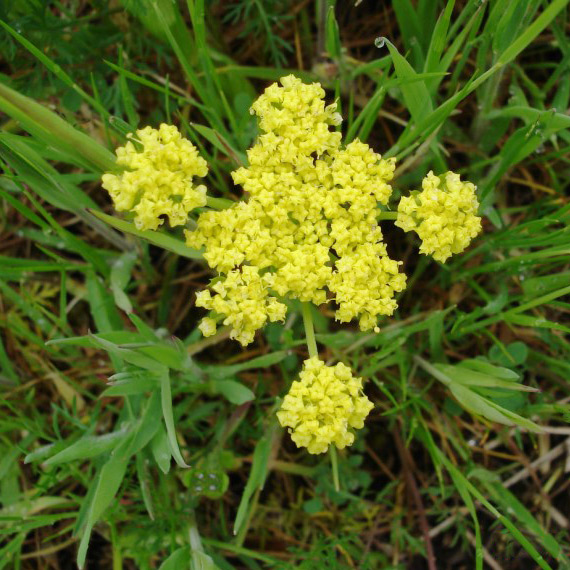Spring Gold
Lomatium utriculatum (Nutt. ex T. & G.) Coult. & Rose

overview
A hairless or short-hairy perennial from a long, fairly slender taproot with leafy stems. It reaches 10-60 cm in height. Leaves: Some of the leaves are basal, but most are on the stem. They are soft, lacy and many times dissected into small, very narrow segments (fern-like). The leaf stalks are abruptly inflated and sheathing at the base. Flowers: The flowers are bright yellow, small with several to many in up to 15 compact heads aggregated in a compound umbel. There are no involucral bracts at the base of the compound umbel, but each umbellet has well-developed, egg-shaped, toothed bracts. It flowers from early in the year to midsummer. Fruit: The fruits are oblong to elliptic, 5-11 mm long, and are somewhat granular-roughened when young and hairless at maturity. They are flattened, broadly winged and with prominent ribs. Photo by Moralea Milne.
other names
fine-leaved lomatium
family
Apiaceae
ecological setting
Vancouver Island and the southern mainland of BC, west of the Cascades and south to California. It occurs on dry, open, rocky slopes, grassy bluffs and vernal meadows at low elevations. It is locally common.
soil texture
Coarse sandy soil.
wildlife
Food source for larval and adult stages of some butterflies.
landscaping
Suitable ornamental for a border or rockery in full sun to light shade in combination with common camas and shooting stars (Pettinger and Costanzo, 2002).
first nations
Spring gold was commonly used by the Southern Okanogan, Flathead, Kalispel, Nez Perce, Kootenay and other peoples of the northwestern U.S. The roots were dug up with bitter-root in April and May, during or just after flowering, and eaten raw, boiled or steam-cooked in pits. They could be dried on mats in the sun and then stored for up to three years.
seed collection time
Late summer
crop intervals
Annual
collection and abstraction
Seed can be easily picked off the stems.
seed storage
Not recommended
fruit seed dormancy treatment
Planted outdoors in flats with well-drained soil in the fall and leave in a protected place over the winter. They will germinate very quickly in the spring and can be transplanted into the growing site as soon as large enough to handle. They like well-drained dry conditions and do not take to staying long in a pot.
additional info and photos
For more information and pictures, visit the E-Flora BC website at www.eflora.bc.ca.